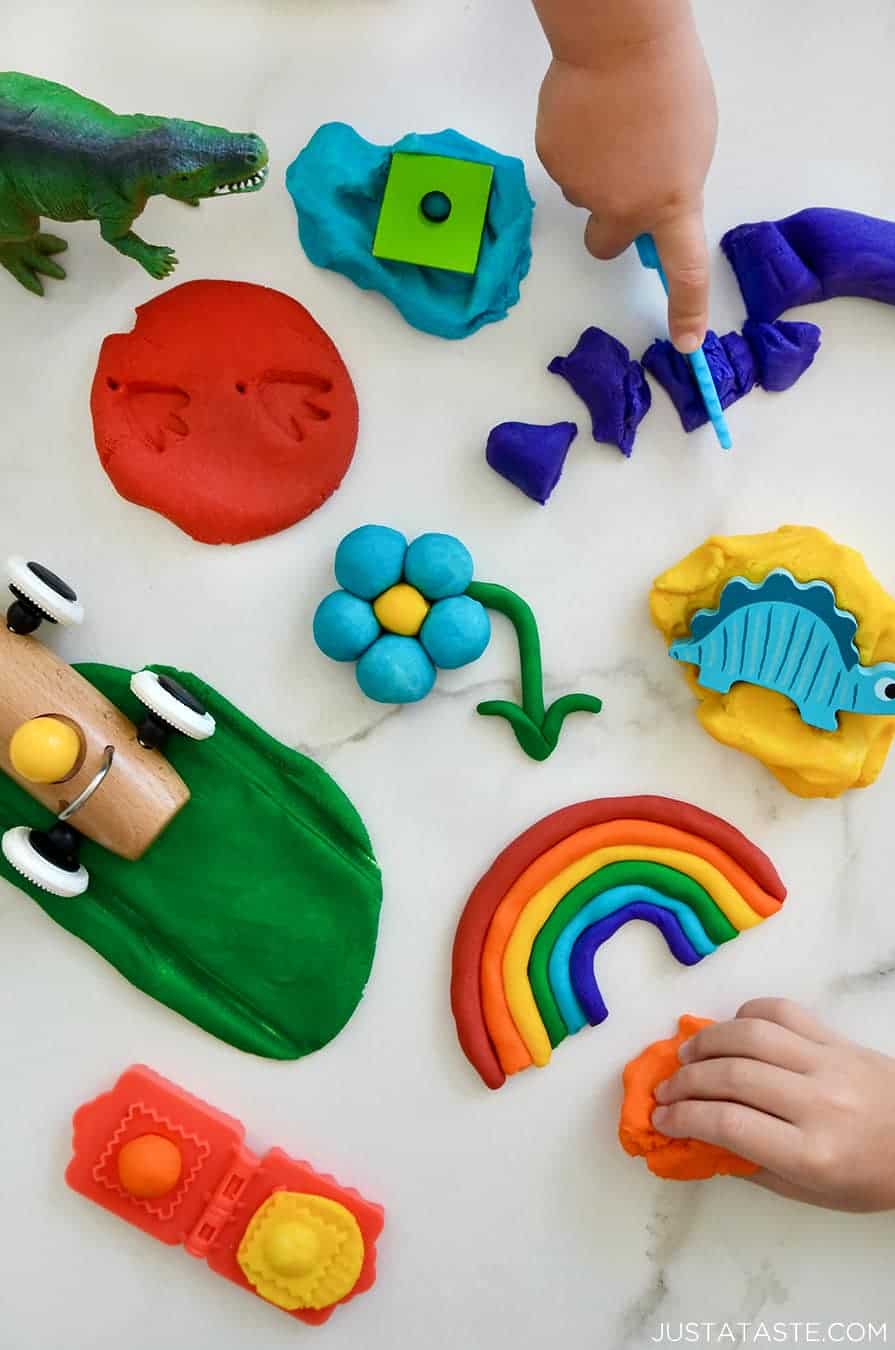Unleashing Imagination: Your Guide to Basic Playdough Fun
Hello there, fun-loving parents! Are you ready to roll, squish, and create magical moments with your kiddos? Playdough, that squishy, colorful dough we all know and love, is not just a great way to pass time; it’s a bustling avenue for creativity, learning, and sensory development. Grab your virtual apron, because we’re about to dive into the whimsical world of basic playdough fun!
The Spectacular Benefits of Playdough Play
Did you know that playdough isn’t just a tool for keeping your little ones busy? It’s actually a powerhouse of developmental benefits! Let’s knead through some of these amazing perks:
- Motor Skill Development: Pinching, rolling, and flattening playdough helps those tiny hands develop both fine motor skills and hand-eye coordination. Plus, it’s great for muscle strength!
- Creativity Boost: With playdough, the only limit is imagination. Children can construct anything from fancy foods to alien planets, letting their creativity soar!
- Sensory Exploration: The texture, colors, and even the smell of playdough provide a full sensory play experience, which is vital for cognitive growth.
- Calming Effects: Like a stress ball but way more fun, squishing playdough can be incredibly soothing and therapeutic for kids (and let’s be real, for adults too).
- Social Skills: When kids play with playdough together, they’re learning valuable lessons in sharing, cooperation, and communication.
Easy-Peasy Playdough Recipes
Making your own playdough at home is a fantastic activity in itself! It’s a playful science experiment that provides an excellent opportunity for bonding and learning. Plus, homemade playdough can be safer and more cost-effective. Here’s a simple no-cook playdough recipe to stir up some fun:
Ingredients:
- 2 cups of all-purpose flour
- 3/4 cup of salt
- 4 teaspoons cream of tartar
- 2 tablespoons of vegetable oil
- 2 cups of boiling water
- Food coloring of choice
- Optional: essential oils for a pleasant scent
Instructions:
- In a large mixing bowl, combine the flour, salt, and cream of tartar.
- Add the vegetable oil and mix until combined.
- Slowly pour in the boiling water, and begin to stir immediately. Use caution as the mixture will be hot.
- Once the dough starts to form, add the food coloring bit by bit until you achieve your desired color.
- After the dough cools down a bit, knead it on a floured surface until smooth. If the dough is too sticky, add a bit more flour.
- If you’d like, add a few drops of essential oil for a scented experience.
- Your homemade playdough is now ready for action!
Remember to store your playdough in an air-tight container to keep it soft and pliable for future play!
Playdough Activities for Endless Fun
Now that you have your very own playdough, it’s time to get those little fingers moving and those imaginations churning. Here are some delightful playdough activities to get started with:

5 Things Parents Should Know in Preparing for Basic Playdough
Before you and your little sculptors begin, there are a few key things to keep in mind. These tips will ensure your playdough experience is as smooth as the dough itself!
- Non-toxic Ingredients: Always ensure that the playdough ingredients are non-toxic, especially if your children are at the age where they might sample a nibble or two. That’s why homemade recipes are so fantastic – you control what goes in!
- Cover Surfaces: Playdough is loads of fun, but it can be less fun to clean from fabrics and carpets. A plastic tablecloth or a baking tray can work wonders for quick and easy clean-up.
- Allergy Checks: If your recipe includes wheat or other common allergens, make sure everyone playing is clear of allergies to these items. There are alternative recipes available for gluten-sensitive squishers too!
- Organizing Tools: Gather all the fun gadgets you have around the house – cookie cutters, rolling pins, and even plastic knives are wonderful for cutting and shaping dough. Just keep it safe and non-sharp for those precious little hands.
- Playdough Care: As fun as it is to leave a playdough cityscape out on display, it’s important to seal the dough away after play to prevent it from drying out. An airtight container or a resealable bag works perfectly.
- Create colorful characters from movies, books, or imagination
- Fashion your own playdough jewelry, such as bracelets and necklaces
- Practice making letters and numbers for a tasty twist on learning
- Cut out intricate shapes to test dexterity and design skills
- Build a playdough garden complete with flowers, veggies, and critters
Don’t forget, the best part about playdough play is where it takes you and your child creatively. There’s no right or wrong way to play, only the fun way!
